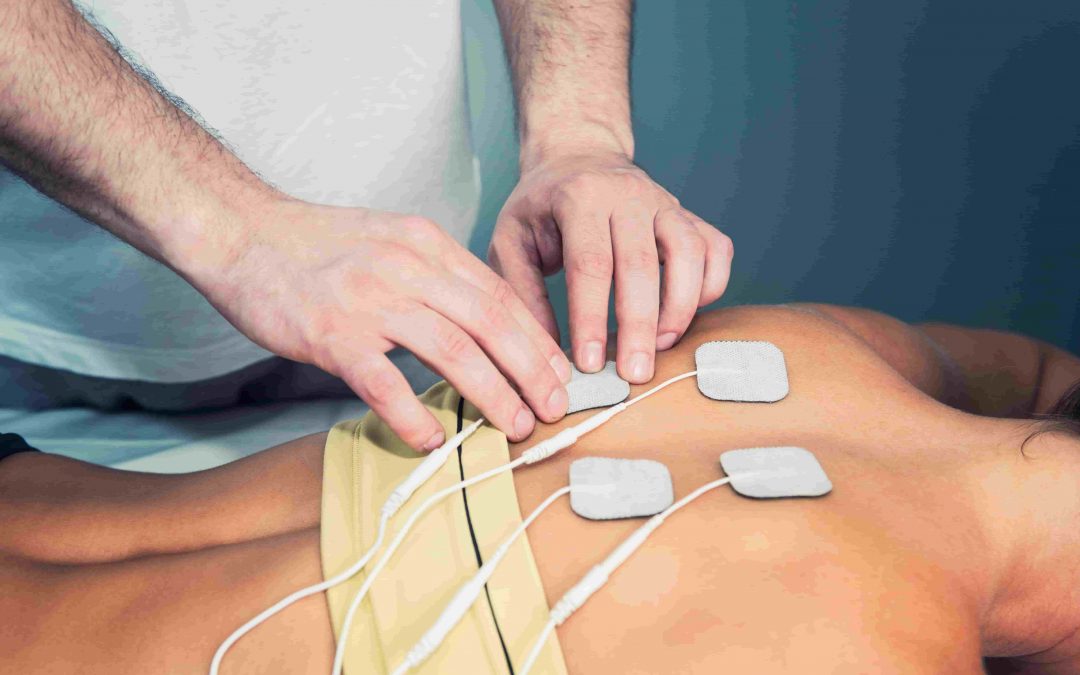When it comes to managing pain and enhancing muscle function tp achieve Pain Relief and Muscle Stimulation, TENS (Transcutaneous Electrical Nerve Stimulation) and EMS (Electrical Muscle Stimulation) units are popular tools that offer significant benefits. These devices, often used in physical therapy and rehabilitation settings, employ electrical impulses to achieve different therapeutic outcomes. At Airport Plaza Spine and Wellness, we frequently incorporate these technologies into our treatment plans to help patients manage pain, recover from injuries, and improve muscle strength. In this blog post, we’ll explore the key differences between TENS and EMS units, their specific applications, and how they can benefit you.
Understanding TENS Units:
1. What is TENS?
TENS stands for Transcutaneous Electrical Nerve Stimulation. This non-invasive pain relief method uses low-voltage electrical currents to stimulate the nerves through electrodes placed on the skin. The primary purpose of TENS therapy is to alleviate pain by disrupting the pain signals sent to the brain.
2. How Does TENS Work?
TENS units deliver electrical impulses through electrodes attached to the skin near the area of pain. These impulses interfere with the transmission of pain signals in the nerves, providing temporary pain relief. Additionally, TENS may stimulate the release of endorphins, the body’s natural painkillers.
3. Applications of TENS Therapy
TENS therapy is commonly used for:
- Chronic pain conditions such as arthritis, fibromyalgia, and neuropathy
- Acute pain from injuries, surgeries, or muscle strains
- Post-operative pain management
- Pain relief during labor
Understanding EMS Units:
4. What is EMS?
EMS stands for Electrical Muscle Stimulation. Unlike TENS, which targets nerves, EMS focuses on stimulating muscles directly. EMS therapy is used to elicit muscle contractions by delivering electrical impulses through electrodes placed on the skin over the targeted muscles.
5. How Does EMS Work?
EMS units send electrical signals that mimic the action potentials sent from the central nervous system to the muscles, causing them to contract. This can help in strengthening muscles, preventing muscle atrophy, and enhancing muscle recovery.
6. Applications of EMS Therapy
EMS therapy is beneficial for:
- Strengthening weak or atrophied muscles
- Enhancing muscle recovery post-exercise or injury
- Improving muscle endurance and performance
- Rehabilitation after surgery or prolonged immobilization
- Preventing muscle atrophy in individuals with limited mobility
Key Differences Between TENS and EMS:
7. Purpose and Application
- TENS: Primarily used for pain relief by targeting nerves and disrupting pain signals.
- EMS: Focuses on muscle stimulation to promote muscle contractions, strength, and recovery.
8. Mechanism of Action
- TENS: Works by sending electrical impulses to nerves, interfering with pain signal transmission and potentially releasing endorphins.
- EMS: Sends electrical impulses directly to muscles, causing them to contract and helping to build strength and endurance.
9. Target Areas
- TENS: Effective for managing pain in specific areas such as the back, neck, shoulders, and joints.
- EMS: Used to stimulate and strengthen specific muscle groups, often in the limbs, core, and back.
Combining TENS and EMS for Comprehensive Care:
10. Integrative Approach at Airport Plaza Spine and Wellness
At Airport Plaza Spine and Wellness, we recognize that each patient’s needs are unique. Our integrative approach often combines TENS and EMS therapies to address both pain management and muscle rehabilitation. By doing so, we provide comprehensive care that promotes overall recovery and well-being.
11. Customized Treatment Plans
Our team of skilled professionals will evaluate your specific condition and create a tailored treatment plan that incorporates the most appropriate modalities, whether it be TENS, EMS, or a combination of both. This personalized approach ensures that you receive the maximum benefit from your therapy.
Conclusion:
Understanding the differences between TENS and EMS units is crucial for optimizing their use in pain relief and muscle rehabilitation. At Airport Plaza Spine and Wellness, we are committed to leveraging these advanced therapies to help our patients achieve their health and wellness goals. Whether you are dealing with chronic pain, recovering from an injury, or looking to enhance muscle function, our experienced team is here to guide you through every step of your treatment journey. Schedule a consultation with us today to learn more about how TENS and EMS can be integrated into your personalized care plan and take the first step towards a pain-free, stronger, and healthier life.
